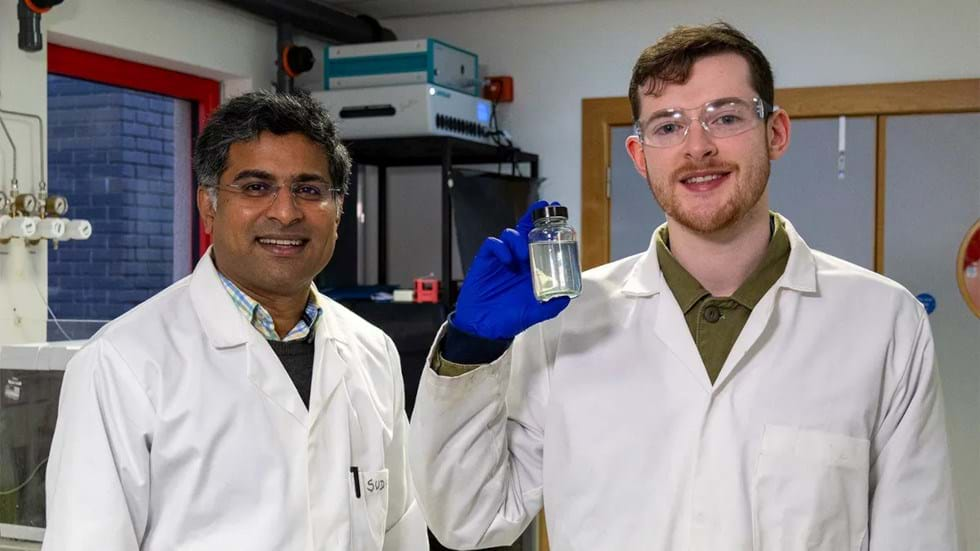Heriot-Watt researchers make hydrogen from whisky wastewater

WASTEWATER from whisky distilleries could be used to produce hydrogen, saving precious freshwater, thanks to nanoparticles used by researchers at Heriot-Watt University.
Electrolysers produce green hydrogen by splitting water with renewable power. They typically require freshwater free of contaminants to work but the team say that coating the system’s anode with nickel selenide nanoparticles overcomes this limitation and could allow green energy to be produced from contaminated wastewater.
“About one billion litres of wastewater a year is produced from the distilling industry, so the potential of this process is huge,” said researcher Sudhagar Pitchaimuthu, a materials scientist in Heriot-Watt’s school of engineering and physical sciences. The team tested its nanoparticle on industrial wastewater collected by the Scotch Whisky Research Institute and found it produced similar or slightly higher quantities of hydrogen compared to tests with freshwater.
“Using industry wastewater means we can reduce the extensive freshwater footprint associated with green hydrogen production. Our research also shows how we can use the world’s resources more sustainably to produce clean energy.”
Electrolysis systems use around 20 litres of water for every kilogram of hydrogen produced, according to a study published last year by the International Renewable Energy Agency (IRENA). It found that hydrogen production currently uses 2.2trn litres of water each year. The researchers hope that their work could help save freshwater and address waste by enabling hydrogen producers to tap into the 1bn litres of distillery wastewater produced each year.
The team now plans to develop its own electrolyser prototype and scale up production of nickel selenide nanoparticles. During the research, the team discovered that the efficiency of the system was held back by bubbles forming at the electrode surfaces. These were caused by the oxidation and reduction processes of biomass in the wastewater. The team says bubble removal techniques including ultrasonic treatment could help address this.
They will also analyse distillery wastewater to see what other valuable resources can be salvaged from it.
Partners in the research included chemical engineers from the University of Bath.
Recent Editions
Catch up on the latest news, views and jobs from The Chemical Engineer. Below are the four latest issues. View a wider selection of the archive from within the Magazine section of this site.




